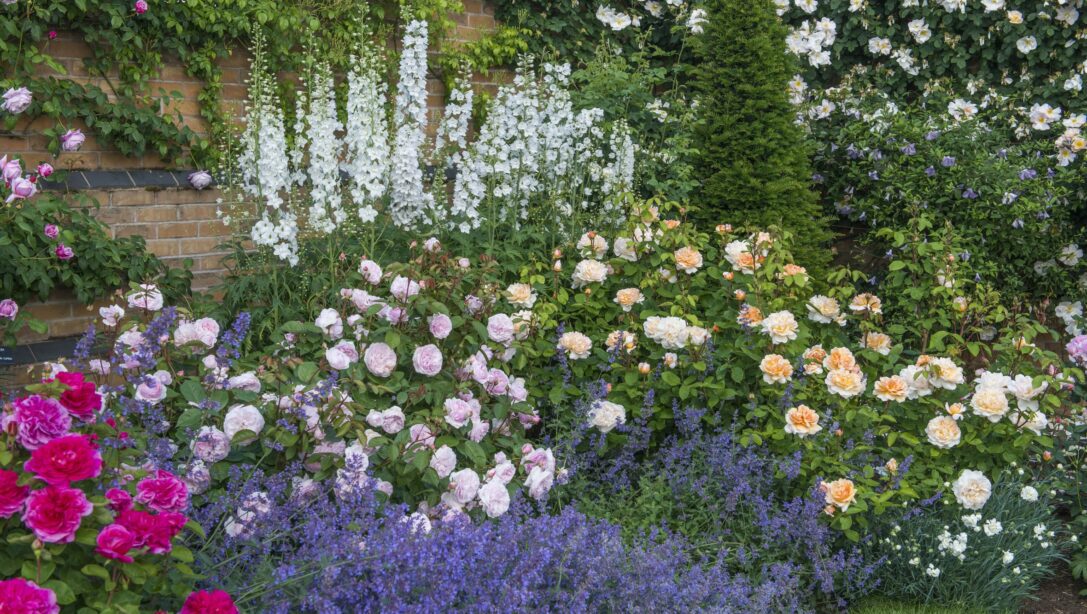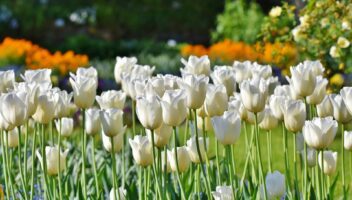Roses are woody, perennial flowering plants, with over three hundred species and thousands of cultivators. Roses range from compact, miniature plants, to climbers that can reach over seven meters in height. The Rose is often cited as the UK’s most loved garden flower, and is essential for the quintessential English garden. With such a variety of colour, scent and size of plant available, there is a rose for every garden, whether that garden is a sprawling country acreage or a city centre balcony.
Roses generally flower from summer to autumn, with some varieties putting on a repeat display from as early in the year as May. Roses do have a reputation for being difficult to cultivate but this is unfair to the plant, because with just a little bit of care, it will reward you richly.
Recommended Rose Varieties
There are a huge number of stunning rose varieties to choose from at Hillier Garden Centres. These are three of our favourites!
Rosa ‘Boscobel’
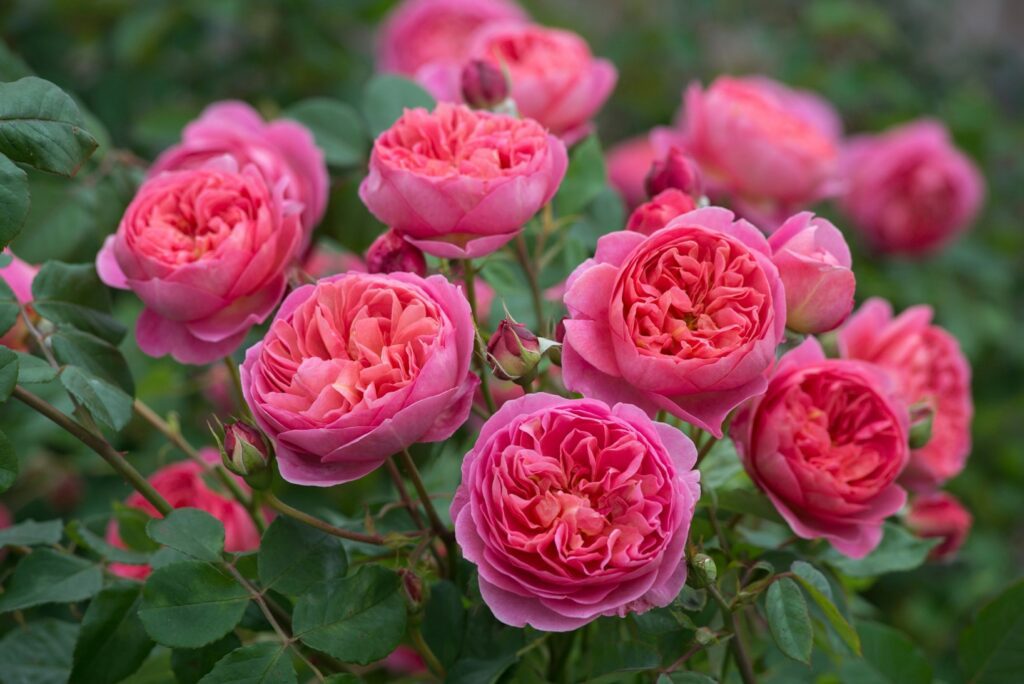
Introduced in 2012 and named after Boscobel House, Rosa ‘Boscobel’ is a coral-pink repeat-flowering upright English Shrub Rose from David Austin Roses. The large flowers are stunning upward-facing rosettes made up of individual petals of slightly varying shades. It offers a delightful myrrh fragrance. This is a great choice for mixed borders, containers or a dedicated rose border. Position in full sunlight and deadhead after flowering to encourage a second flush.
Rosa ‘Queen of Sweden’
This medium-sized shrub rose produces wide, upward-facing flowers that gradually transform from an apricot pink to soft pink. Introduced in 2004 by David Austin Roses, the name of this bushy upright shrub variety commemorates the 350th anniversary of the Treaty of Friendship and Commerce between Sweden and Great Britain. Reaching around 1.25m in height, it is a great choice for mixed and rose borders and can also be trained as hedging. Position in a sunny or partially shady spot and enjoy the myrrh fragrance.
Rosa ‘Tranquility’
Available as both a shrub rose and standard rose, Rosa ‘Tranquility’ produces beautiful large flower rosettes that fade from a slightly cream-white to pure white over time. This is a vigorous variety that will grow to 1.25m in height as a shrub rose or 1.8m as a standard rose. Giving off a gentle fruity fragrance, this is a good choice for mixed borders, containers and as a cut flower. Position in full sunlight.
Rose Factfile
Type: Shrub
Flowering time: Summer and autumn
Sun Requirements: Most roses enjoy a sunny spot, although some varieties can tolerate partial sunshine. It is advised to never plant a rose under the shade of a taller shrub or tree.
Soil: Roses can tolerate all soil types.
Hardiness: Most varieties are fully hardy.
Rose Growing Guide
Planting
While roses will grow in almost any soil, when you first plant them incorporate some well-rotted garden compost or manure to get them off to a great start. If planting in the ground, use a multi-purpose compost and some soil enricher. When planting in a pot use a 50/50 mix of multi-purpose compost and John Innes No3.
If planting in a pot, ideally aim for a pot size double the depth of the pot the rose is in. Depth is really important for planting roses. Patio roses are available which are designed for smaller pots.
If planting a rose in the ground, it is also of benefit to add Mycorrhizal Fungi to help the plant establish.
If putting a rose in a pot you will need to pay close attention to watering – plants in pots dry out far quicker.
Mulch with bark chippings to help retain moisture and prevent weeds, but make sure that you keep the mulch around four inches from the stems.
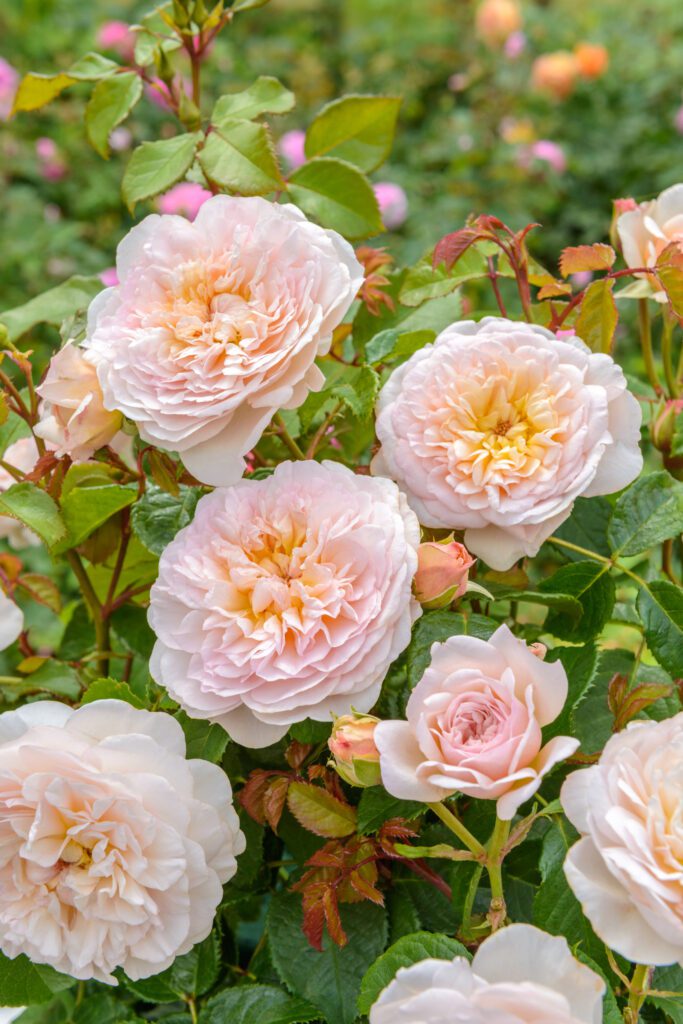
Feeding
Roses are hungry plants that really thrive with generous feeding. This encourages stem growth and the continuous formation of new buds throughout the flowering season. Feeding also helps your rose stay healthy and put on new growth in the event of any problems with disease.
From mid-spring until late summer, feed container roses once a fortnight with a general-purpose fertiliser or tomato feed.
Watering
Watering is vital for healthy roses. Newly planted roses should be watered every few days during summer. More established roses may be watered closer to once a week.
Water at the base of the rose, not over the foliage or flowers.
Support
It is common for young roses to droop when in flower for the first time. This usually happens if the rose was planted this year and its roots have not had time to establish, meaning they cannot support the weight of the plant. It is nothing to worry about; simply support the rose using a plant support ring or stake and water well.
Drooping or wilting may also be caused by underwatering, so it is usually a good idea to give your rose a thorough water if it does droop.
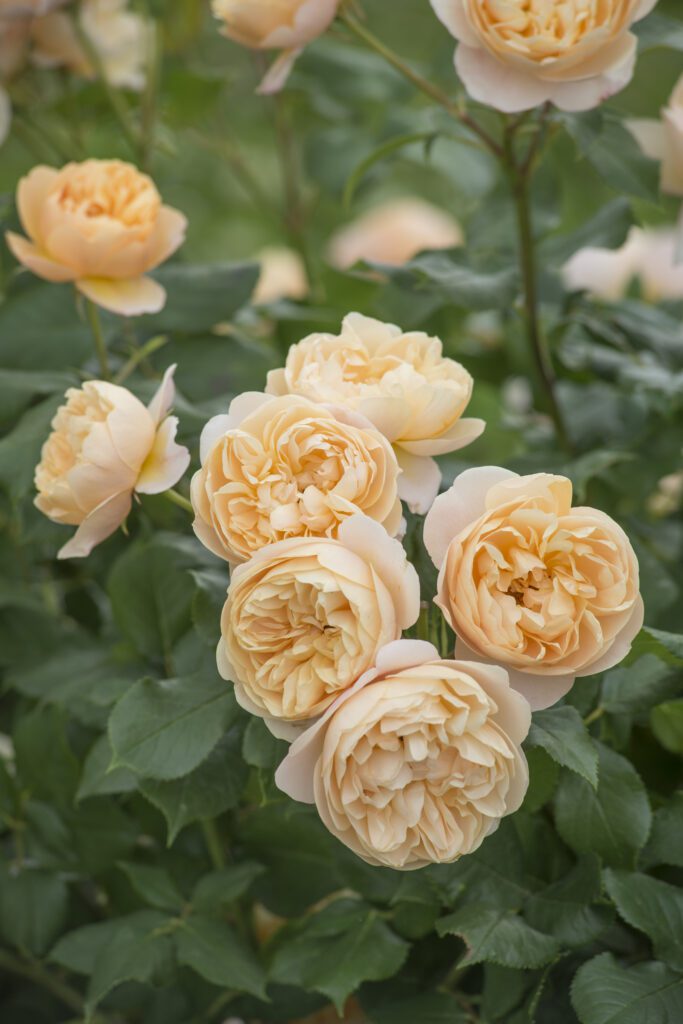
Pruning
Deadhead roses to keep them looking good and flowering for longer. Removing spent flower heads will encourage the plant to divert its energy to new flowers and stronger foliage. Remove the spent head down to the main stem but be careful not to remove any unopened buds! Once all buds from a stem have finished flowering, the stem can be cut down to the height of the rest of the plant. This also provides a good opportunity to shape the plant to keep it from getting too leggy.
Prune your roses in late winter or early spring. Cut back flowering shoots and remove any dead and damaged stems, then strip off leaves after pruning to prevent disease.
Disease Management
Roses can be susceptible to black spot, which looks exactly as the name would suggest and shows on the leaves. If your rose is suffering from black spot, remove the affected leaves and burn. You can also spray as required with a fungicide.
Rose Complementary Planting Ideas
Roses are versatile and depending on the variety can be best suited as part of a mixed border or as a rose border. Underplanting shrub roses with a succession of flowers will reinforce the beauty and extend the flowering season of your border. Spring bulbs such as snowdrops, crocus and narcissi are perfect.
A traditional companion for a rose is lavender, which complements the rose scent perfectly, and enjoys the same growing conditions.
Herbs and other aromatic plants are also great companions for roses, and members of the onion family such as chives are even said to increase the perfume of roses, ward off aphids and prevent black spot.
Rose Top Tip
Encourage repeat flowering by deadheading your rose throughout the flowering period.
Rose Fact
The world’s oldest living rose is believed to be 1,000 years old. It grows on the wall of the Cathedral of Hildesheim in Germany and its presence is documented since A.D. 815. According to the legend, the rosebush symbolizes the prosperity of the city of Hildesheim; as long as it flourishes, Hildesheim will not decline. In 1945 allied bombers destroyed the cathedral, yet the bush survived. Its roots remained intact beneath the debris, and soon the bush was growing strong again.


